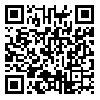Volume 17, Issue 1 (Paramedical Sciences and Military Health- Spring- 2022)
Paramedical Sciences and Military Health 2022, 17(1): 21-30 |
Back to browse issues page
Download citation:
BibTeX | RIS | EndNote | Medlars | ProCite | Reference Manager | RefWorks
Send citation to:



BibTeX | RIS | EndNote | Medlars | ProCite | Reference Manager | RefWorks
Send citation to:
Maleki roveshti M, Raei M, Valipour F. Assessment and Characterization of Physical Hazards in Workplace: A Case Study in a Military Dental Hospital. Paramedical Sciences and Military Health 2022; 17 (1) :21-30
URL: http://jps.ajaums.ac.ir/article-1-311-en.html
URL: http://jps.ajaums.ac.ir/article-1-311-en.html
1- Department of Occupational Health and Safety Engineering, School of Public Health, Baqiatallah University of Medical Sciences, Tehran, Iran , mehranmaleki383@gmail.com
2- Department of Occupational Health and Safety Engineering, School of Public Health, Baqiatallah University of Medical Sciences, Tehran, Iran
2- Department of Occupational Health and Safety Engineering, School of Public Health, Baqiatallah University of Medical Sciences, Tehran, Iran
Abstract: (3149 Views)
Introduction: Continuous exposure to physical hazards above the recommended standard in hospital work environments can affect the health of employees. The purpose of this study is to evaluate and describe the physical harmful factors of the work environment in different departments of Shahid Shukri Dental Hospital in Tehran.
Methods and Materials: The current research was designed and implemented as a crosssectional survey using the measurement of physical factors, the risk matrix method and a general questionnaire including demographic characteristics and employees’ perception of comfort and convenience in the workplace. Identifying and evaluating the physical harmful factors of the hospital and determining the level of risk by measuring the variables of sound, lighting, temperature, wind flow and humidity have been performed. Data analysis was performed using SPSS statistical software version 25.0.
Results: In the present study, in the laundry and CSSD work areas, the level of illumination was 210±4.33 and 221±6.55 lux, respectively. Moreovere, the temperature was 29±2.14 and 27±1.68 degrees Celsius in the high risk range (level C). The amount of wind flow was at a high risk level (level C) in the reception department for patients and visitors on the ground floor. There was statistically significant differences in the level of brightness and the discrepancy in sound pressure level among various departments of this hospital (P-value<0.05). However, there was not any significant difference in humidity, temperature and wind circulation among different departments of this hospital (P-value > 0.05). 32.1% of the employees described the hospital environment as uncomfortable and 67.9% of them described it as acceptable.
Discussion and Conclusion: The results of the present study showed that the measurement of physical risk factors in the workplace, the risk assessment matrix method, and using hospital employees opinions can be useful tools for identifying and assessing the risks of physical factors such as sound, lighting, humidity, temperature, and wind flow in hospital environments.
Methods and Materials: The current research was designed and implemented as a crosssectional survey using the measurement of physical factors, the risk matrix method and a general questionnaire including demographic characteristics and employees’ perception of comfort and convenience in the workplace. Identifying and evaluating the physical harmful factors of the hospital and determining the level of risk by measuring the variables of sound, lighting, temperature, wind flow and humidity have been performed. Data analysis was performed using SPSS statistical software version 25.0.
Results: In the present study, in the laundry and CSSD work areas, the level of illumination was 210±4.33 and 221±6.55 lux, respectively. Moreovere, the temperature was 29±2.14 and 27±1.68 degrees Celsius in the high risk range (level C). The amount of wind flow was at a high risk level (level C) in the reception department for patients and visitors on the ground floor. There was statistically significant differences in the level of brightness and the discrepancy in sound pressure level among various departments of this hospital (P-value<0.05). However, there was not any significant difference in humidity, temperature and wind circulation among different departments of this hospital (P-value > 0.05). 32.1% of the employees described the hospital environment as uncomfortable and 67.9% of them described it as acceptable.
Discussion and Conclusion: The results of the present study showed that the measurement of physical risk factors in the workplace, the risk assessment matrix method, and using hospital employees opinions can be useful tools for identifying and assessing the risks of physical factors such as sound, lighting, humidity, temperature, and wind flow in hospital environments.
Type of Study: Research |
Subject:
full articles
Received: 2022/08/28 | Accepted: 2022/09/15 | Published: 2022/10/2
Received: 2022/08/28 | Accepted: 2022/09/15 | Published: 2022/10/2
Send email to the article author
| Rights and permissions | |
 |
This work is licensed under a Creative Commons Attribution-NonCommercial 4.0 International License. |





